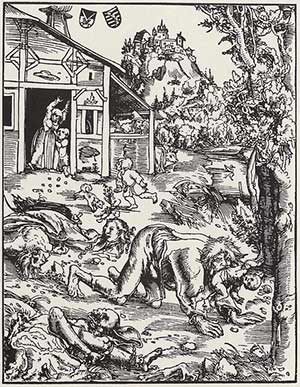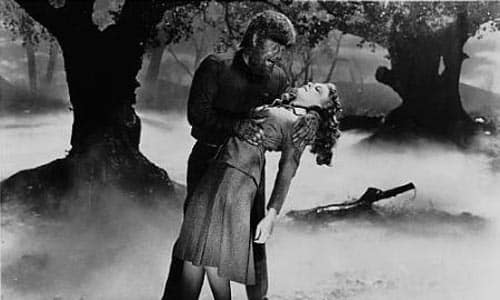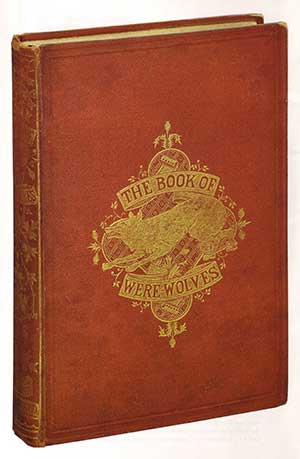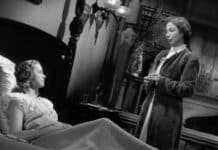KAJA FRANCK presents some quick werewolf morsels for you to snack on …

Move over the Witch Trials, here come the Werewolf Trials
Most people in Britain have heard of the Witch Trials – mainly because James I loved his accusations of witchcraft – but will look blank if you talk about the Werewolf Trials. These predominantly took place in France and Germany, though werewolves appeared across continental Europe, throughout the 16th and 17th century. Two of the most infamous cases were Peter Stumpp, the Werewolf of Bedburg, and the French werewolf Jean Grenier.
In 1589, Peter Stumpp was put to death for being a confessed werewolf. Amongst his crimes was the accusation of cannibalism (pretty standard fare among werewolves) and commiting incest with his daughter. He professed to killing and eating fourteen children and ripping the foetuses from two pregnant women in order to consume their still beating hearts.
As punishment Stumpp’s flesh was torn from ten places on his body with red-hot pincers. His limbs were ten broken with an axehead and he was then beheaded and burnt. The details can be found in a pamphlet of the crime published in English in 1590 – a copy can be found at the British Museum and Lambeth Library.
In comparison, Jean Grenier was accused of killing and eating a number of children in 1603. Though he too confessed to transforming into a wolf with the help of the Devil, he was not executed but given life-long imprisonment in a local monastry.

Little Red Riding Hood was Darker Than You Think …
Whilst ‘Little Red Riding Hood’ does not explicitly mention werewolves some of the earlier versions hint at lycanthropy as the wolf convinces Little Red Riding Hood to eat some of her grandmother’s flesh and drink some of her blood. Jack Zipes in The Trials and Tribulations of Little Red Riding Hood suggests that this aspect of the novel may have been inspired by tales of werewolves as the oral version of this fairytale came from areas where werewolf trials were predominant.
The Werewolf treads the boards
British folklore and literature is lacking in werewolves in comparison to our continental cousins. One of the theories put forward for this is the lack of wolves in the British Isles. The first use of the word “lycanthropy” in English literature is in John Webster’s The Duchess of Malfi (1614). Ferdinand, the Duke of Calabria, is seen in a graveyard with the leg of a man on his shoulder and later confesses that whilst a wolf is hairy on the outside he is hairy on the inside.
It’s not easy being hairy on the inside
Being ‘hairy on the inside’ was, according to Sabine Baring-Gould, a way of convicting someone of being a werewolf. In The Book of Werewolves (1865), he recounts the tale of a farmer from Pavia who was accused of being a werewolf in 1541. To prove his guilt, the magistrates decided to see if he had hair growing on his inside. What was proved was that if you peel a human, they tend to die.
“I used to be a werewolf but I’m alright noooooooooooooowwwwwww”!
The psychiatric term ‘clinical lycanthropy’ was used until the late twentieth-century as a way of people who believed they could or were transforming into an animal. At first this was limited to wolves but later it was shown that people believed they could turn into a variety of animals. The term fell out of usage when it was decided that clinical lycanthropy was an aspect of other mental illnesses such as schizophrenia, bipolar disorder, or clinical depression.
The Canonical Werewolf in English Literature
Whilst werewolves may not be as prolific in English Literature as vampires, they have their share of famous fans. Notably in werewolf short stories such as Robert Louis Stevenson’s ‘Olalla’ (1887), Rudyard Kipling’s ‘The Mark of the Beast’ (1890), and Arthur Conan Doyle’s ‘A Pastoral Horror’ (1890).
Dracula: Vampire or Werewolf?
Speaking of literature, most people consider Count Dracula to be the archetypal vampire. However, according to Bram Stoker’s notes, many of Dracula’s physical characteristics come Baring-Gould’s description of Jean Grenier, the French werewolf, and accounts of folkloric lycanthropes. Dracula’s monobrow, long ring finger, hairy palms and even his protrouding canine teeth come from The Book of Werewolves.
There’s a She-Wolf in the Closet

There is a lack of female werewolves in both folklore, literature and movies – though this is, thankfully, changing. However, should you become suspicious that one of your female acquaintances is a werewolf, there is a fool proof test. According to Robert Eisler, in his paper Man into Wolf: An Anthropological Interpretation of Sadism, Masochism, and Lycanthropy, a female werewolf can be recognised by their love of high heels, fur coats, and red nail varnish. So, your basic femme fatale.
The Silver Screen shines a new light on the Werewolf
Mention werewolves and most people think full moon and silver bullets. Sadly, these lycanthropic qualities are relatively recent and were added by Hollywood. Specifically, the success of The Wolf Man (1941) helped to make this fictions werewolf lore. The well-known rhyme comes from this movie:
“Even a man who is pure of heart
And says his prayer by night
May become a wolf when the wolfblane bloom
And the autumn moon is bright.”
When did you ‘see the wolf’?
And last but not least. This might not be about werewolves specifically but it is one of the best little tidbits that I have picked up during my research. In France, one of the colloquialisms for losing your virginity is ‘seeing the wolf’.








